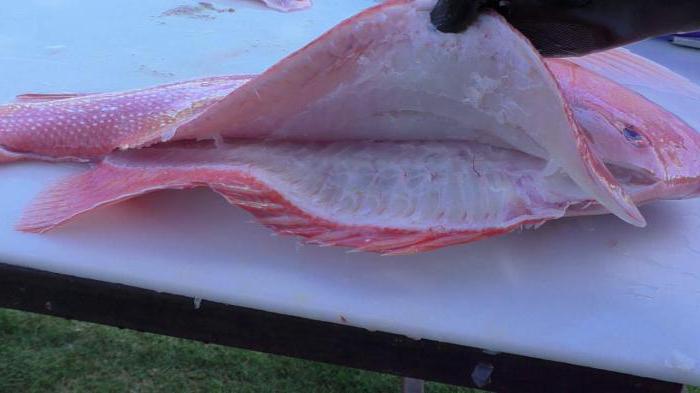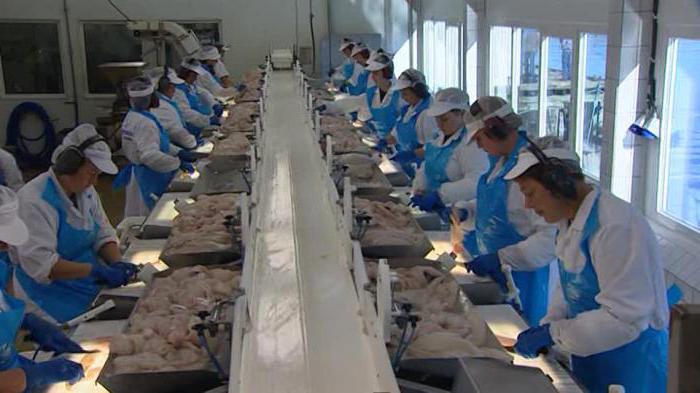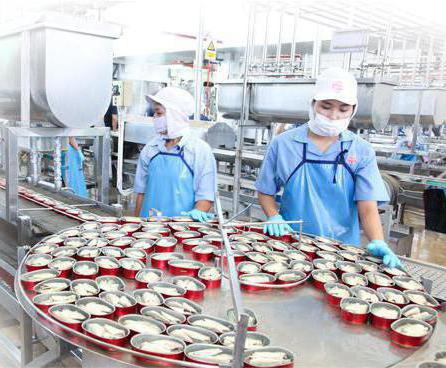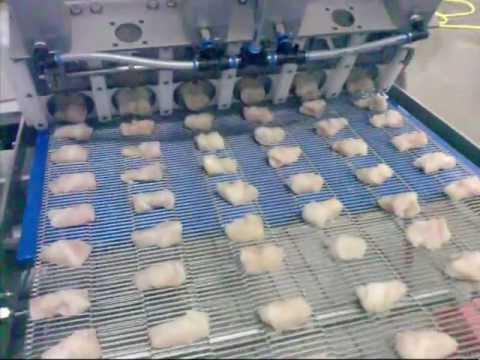Fish is an indispensable food for humans. It is rich in nutrients. For many coastal countries, fish is the only source of income. But before it is on the table, it needs to be processed and cooked. For this, there is fish production. Read about it in the article.
How to cut fish into carcass?
To do this, it is cut in the abdomen. The head, scales, entrails, milk and caviar are removed along with the black film. Then blood clots are cleaned and fins are cut off, the tail remains for now. It is removed along with the stem 1-2 centimeters above the fin of the same name. The slice is made straight.

Butchering fish can be done differently. Using an oblique cut, the head is removed with part of the abdomen. The section is semicircular, it captures the head, entrails and fins. Caviar, milk remains in place. This method of cutting is applicable to flounder species of fish or resembling them in shape. Scales can not be cleaned.
How to cut fish into fillets?
This procedure can be performed using several methods, either manually or using machines. First, the scales are removed from the surface of the skin. Then an incision is made in the abdominal region, after which the viscera and the black film are removed, and the abdominal cavity is thoroughly washed with water. Only then can the head, as well as the fins and humerus, be separated. The tail must be left in place.
After that, cuts are made along the entire spine along the back. First half of the fillet is separated from the bone of the spine and tail, and then the other. The skin is left at will. It is imperative to ensure that the surface of the fillet plates on the cut is flat, and as little fish pulp as possible remains on the spine. Remains of fins, as well as costal bones, are cut off from the fillet. The bruising is removed and the fillet plates are aligned at the edges. If the abdomen is thin, it can be cut.

Cutting fish on a fillet using a machine facilitates work, as individual operations do not need to be performed manually. After the fish is cleaned of scales, a head cutting machine is used to remove the head. After this, the abdomen is manually cut, the viscera are removed, and the abdominal cavity is cleaned of blood and black film.
Fish production involves the replacement of many manual fish-cutting operations with machines. So, a washing machine is used to wash it, from where the decapitated, gutted and washed carcass enters the filleting machine, where the fillet is separated from the bones of the spine and fins. The skin can be separated by machine or manually. To obtain fish fillets without skin, you do not need to remove the scales.
How to cut fish in the back?
This method is used to obtain dried or smoked products. Fish species such as sea bass, mackerel, large herring, horse mackerel, and salmon species are suitable for this. This method of cutting is used when freezing pollock and other inhabitants of reservoirs.
First, the fish is cut in the abdomen, and the entrails are removed. Then the head, along with the dorsal fin and shoulder girdle, is cut off. After that, the abdominal part, or toma, is separated from the back using a direct cut. Butchering can be done a little differently. First, you can remove the head, and then separate the abdomen and take out the insides, making side cuts. Separated back and tesh are cleaned from black film and bruising.
Fish products
These are mostly preserves, which are called canned foods that have not undergone sterilization. Their storage is limited in time. Fish products are produced in factories. For the manufacture of preserves, Black Sea or Baltic sprat, hamsa, capelin, mackerel, herring and other species are used.

Fish production uses raw materials that must meet the highest quality standards, primarily in terms of fat content. So, Atlantic herring, Kuril mackerel and sel-ivasi should contain 12% fat, and Pacific herring, Far Eastern mackerel - 6% or more. Pour the fish with brine or marinade, which is prepared with the addition of salt, vinegar, as well as flavoring and aromatic additives. As a fill, you can use refined vegetable oil: sunflower or olive. The fish factory has a large number of tin or glass containers. These are banks of various capacities, which can have a different configuration.
Features of production
Preserves are made from raw materials, which are fish semi-finished products of different salting, such as spicy, simple or special. A prerequisite is an indicator of the salt content in semi-finished products, the mass fraction of which should not exceed 10%. Depends on the volume of containers, how to cut raw materials.

Large containers, with a capacity of 1.3 kilograms or more, are used to produce preserves filled with brine. Salted fish semi-finished products can be chopped and uncut. Small containers with a small capacity are used to make preserves from herring fish fillets. The fill is sauce or vegetable oil.
The fish factory produces products that are ready to eat, cooking is not required. Preserves are made with high quality due to the natural taste of fish.
Fish Technology
The production process for the manufacture of preserves includes the following stages and operations:
- First, the fish is washed.
- Then it is sorted and cut into fillet, carcass or pieces.
- Preservative mixtures, side dishes, sauces, oils are prepared.
- Empty containers (cans) are prepared and served.

- Fish preparations are packaged in jars and poured with brine, marinade, sauce or butter.
- Canning jars are corking.
- Their appearance is made out.
- Finished products are packed in containers for transportation.
Equipment
The production line is equipped with equipment on which various operations are carried out. Its composition depends on how the fish will be processed and in which containers to fit. Equipment for fish production is selected in such a way that with its use it was possible to produce preserves of various types.
The line includes a complex of equipment on which semi-finished products are processed and fish stocks are made. This complex consists of washing, filleting, skinning and other machines for cutting fish.

The next complex includes a machine with which empty containers are washed, and conveyors for its accumulation and transportation. This also includes equipment for determining the dose of components according to the recipe; canned mixtures, marinades, sauces, oils, side dishes are prepared on it.
The most important complex of the production line consists of equipment with which cans filled with the product are obtained. These are machines for dispensing blanks and their packaging; filling, seaming and corking cans; scales to control their contents.
The final is the complex, which includes washing and drying equipment; machines for labeling and packing cans in boxes for transportation.
Fish use
Fish production is currently improving methods of processing raw materials to obtain high-quality products and expand its range, as well as to obtain economic benefits. For the rational use of fish, fillets are produced from it for the manufacture of products with maximum use of waste.

One of the uses of fish raw materials is the production of minced meat. A variety of products are produced on its basis, including one that imitates mollusks and crustaceans. For such products, prices are much lower, therefore, it is in demand among buyers.
Frozen blocks reminiscent of fish fillet and sticks are made from minced meat. The minced area has recently been used in the practice of our country. Many fish factories have established the production of sausage and sausage products and products similar to sour-milk. But its range is limited, and so far it is produced in small volumes.